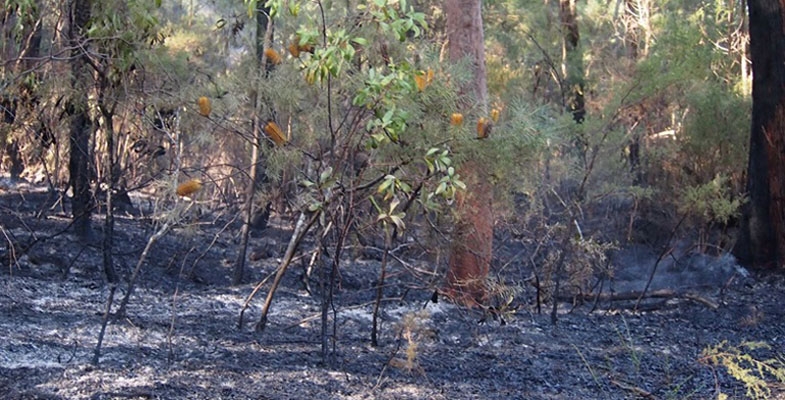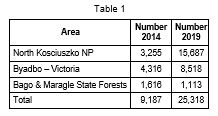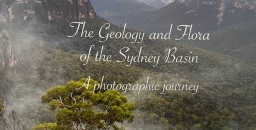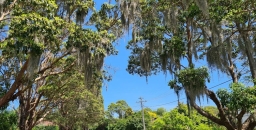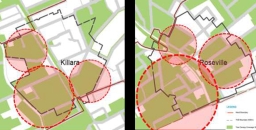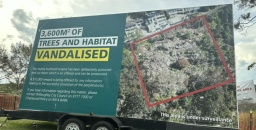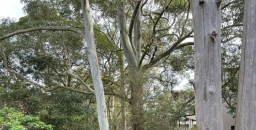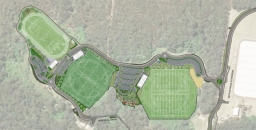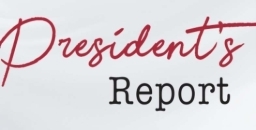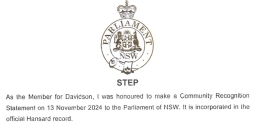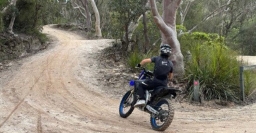Australia and the world have been horrified by the devastating bushfires that have been burning along the east coast and tablelands and South Australia since September and reached their climax in December and January. These events have given the world a stark example of the extreme events that will be experienced as a result of climate change. The severe drought conditions combined with weather systems that delivered hot westerly winds followed by strong southerly changes created severe and unpredictable fires. On top of the impact on fire fighters and communities, the long-term impact on biodiversity will become apparent over many years. The Department of Planning, Industry and Environment (the department) has done a preliminary assessment of the areas affected by fires using satellite imaging.
As the department states, the period immediately after a fire is critical for the survival of injured animals and for threatened species. The priority is to support those involved in the recovery of injured wildlife and detailed data on the damage to habitat is essential for planning the next steps to minimise the long-term loss of ecosystems.
As of 10 January 2020, the data available reveals that:
- 5.128 million hectares (6.4%) of NSW has been affected by the wildfires. The severity of fire within this total area varies.
- More than 35% of the national park estate (or 2.539 million hectares) has been impacted. In key bioregions, the figure is well over 40%.
- More than 80% of the Greater Blue Mountains World Heritage Area and 54% of the Gondwana Rainforests World Heritage Area have been affected by fire.
- The most affected ecosystems are rainforests (35% of their state-wide extent), wet sclerophyll forests (41%) and heathlands (53%).
- More than 60 threatened fauna species have been affected by the fires, including 32 species for which 30% or more of all recorded locations occur in the burn areas.
As at 10 January 2020, the bushfires had impacted on the habitat of at least 60 threatened species listed under the NSW Biodiversity Conservation Act 2016.
The intensity of the fires has varied widely. In this initial assessment, the department developed a new methodology using Google Earth imagery which enabled the rapid estimate of where fire skipped over an area within the fire ground, leaving it little affected, where it burned the understorey and some of the canopy, where it burned the canopy only, and where it appears to have burned all vegetation.
Once it is safe to do so and ensuring that the environment is not damaged inadvertently, the department is carefully preparing a more refined version of this data for each fire ground, which utilises reference data gained from aerial imagery and ground-based post-fire surveys to provide a more detailed understanding of this variation.
Impact on Threatened Fauna
The department has compared the records of 300 threatened fauna species with bushland affected by the ongoing fires.
As of 10 January 2020, fires have burnt in:
- 70% of the bushland where six threatened animal species were previously sighted include the Long-footed potoroo, Philoria pughi (a frog), Hastings River mouse and Brush-tailed rock-wallaby
- 30% of the bushland where 32 threatened animal species were previously sighted
- 5% of the bush areas where 114 threatened animal species were previously sighted
As of 6 January 2020, more than 24% of all koala habitat in eastern NSW was within fire-affected areas. The total area of highly suitable koala habitat affected by fire in eastern NSW was more than 19%.
The data is being renewed as staff get the opportunity to check the situation on the ground.
Threats to Recovery
In the flurry of announcements of funding for bushfire recovery it is hard to get a perspective on funding that has been provided to prevent loss of animals that have survived. $50 million sounds good but this is against a background where funding for environmental management has been cut by Coalition governments. Will extra staff be employed to carry out the work required?
Recovery will involve the following stages:
- rescue of injured animals
- providing survivors with food and water
- prevention of damage to unburnt bushland from the extra browsing pressure, particularly from feral animals
- removal of feral predators such as cats and foxes
Will the NSW Government Amend its Policies?
There are two areas where the NSW Government has perverse policies.
Feral Horses in Kosciuszko National Park
In November the results of an aerial survey of feral horse numbers was released. The numbers have increased by more than 170% in the past five years. In the most populated area, North Kosciuszko National Park, the 2019 numbers are almost five times the 2014 numbers (see Table 1).
These numbers of horses are having a huge impact on alpine species and ecosystems. Horses create tracks through alpine swamps causing the water to drain away. They damage vegetation along streams that are essential for the survival of threatened species such as the Corroboree frog and Stocky Galaxia fish. These streams are the headwaters of the Murray and Murrumbidgee Rivers. Horses also pose a risk on roads.
The North Kosciuszko area, that has the highest number of horses, is also an area badly affected by the fires. So, the horses will move into the undamaged parts of the north placing great pressure on alpine vegetation already stressed by drought.
The NSW Government has virtually completely cut the program to remove the horses from the park. Only 99 were removed in 2019 and none in 2017 and 2018. Thanks to the influence of the leader of the National Party, John Barilaro, the horses are treated as having heritage value despite the huge damage they are doing to the sensitive alpine vegetation and animal species. The successful program of aerial culling has been terminated.
Hope for change now rests with the new feral horse management plan being developed by the recently established Kosciuszko National Park Wild Horse Community Advisory Panel and the Wild Horse Scientific Advisory Panel.
The Scientific Committee said the draft plan for action will be open for comment in February 2020 to meet NSW environment minister Matt Kean’s deadline for a final plan by 1 May 2020. This rapid timeframe is essential as substantial control measures should be implemented straight away before winter conditions arrive.
Clearing of Koala Habitat
The decline in koala numbers in NSW has been highlighted over many years by environment groups. The major causes have been land clearing for agriculture, forest logging and urban development. A significant part of koala habitat in NSW is in state forests or private land. The forests will recover after the fires but in the meantime the precarious situation for koalas will worsen.
Before this summer’s bushfires, koala populations in NSW and Queensland had already dropped by 42% between 1990 and 2010, according to the federal Threatened Species Scientific Committee.
The mid-north coast is home to a significant number of Australia’s koalas, with an estimated population between 15,000 to 28,000. It is estimated that 30% of their habitat was destroyed in the November/December fires in that area.
NSW Forestry Corporation is still logging unburnt koala habitat in state forests. It is believed that the NSW Government is planning on privatising the Forestry Corporation. The initial focus will be on selling softwood plantations but, as the organisation shrinks, the rest of the organisation will be regarded as uneconomic and the native forests will be next. It is reasonable to expect that private owners are likely to expect a higher profit and hence more rapid harvesting. The principle of sustainable harvesting has been compromised before.
The major clearing is occurring in the inland woodlands where the push is for agricultural development. Grazing land can allow for trees to be retained to shelter stock and provide bird habitat. The push has been to total clearing to make it easier for machinery to plough, plant and harvest vast swathes of land. The value of this cleared cropping land increases dramatically. What will its long-term value be when the nutrients and carbon in the soil have been blown away in dust storms?
As for clearing for urban or tourist development, the State Environmental Planning Policy (Koala Habitat Protection) 2019 has been changed recently. It clarifies the definition of core koala habitat and increases the number of tree species that can be used to identify koala habitat from 10 to 123. 99% of identified koala habitat on private land in NSW was at risk of being cleared before these changes and that remains the case.
On a more hopeful note the NSW Government has allocated $20 million for the purchase of private land that is core koala habitat to be converted into the reserve system. The NSW Koala Strategy is part of a long-term vision to first stabilise, then increase, koala population numbers across the state. Through many of its actions, it will also contribute to protecting other threatened species.
The NSW Government has committed $44.7 million to support the implementation of the NSW Koala Strategy.
With the sudden loss of so much koala habitat the logging contracts must be reassessed. There is talk that the numbers of koalas killed has tipped the population into the threatened category. It is hoped that the population assessment is made before the loggers can move back in to unburnt habitat.

